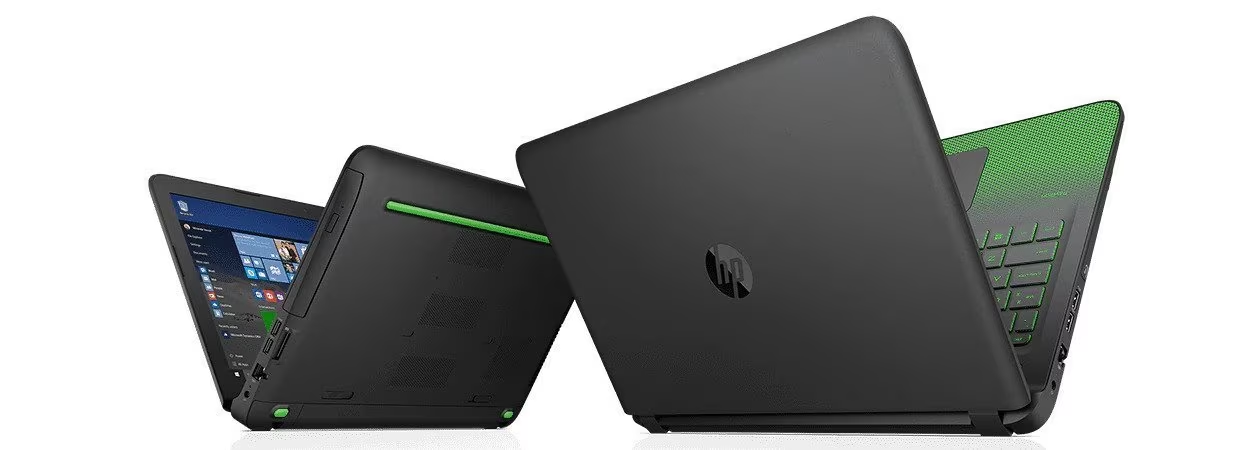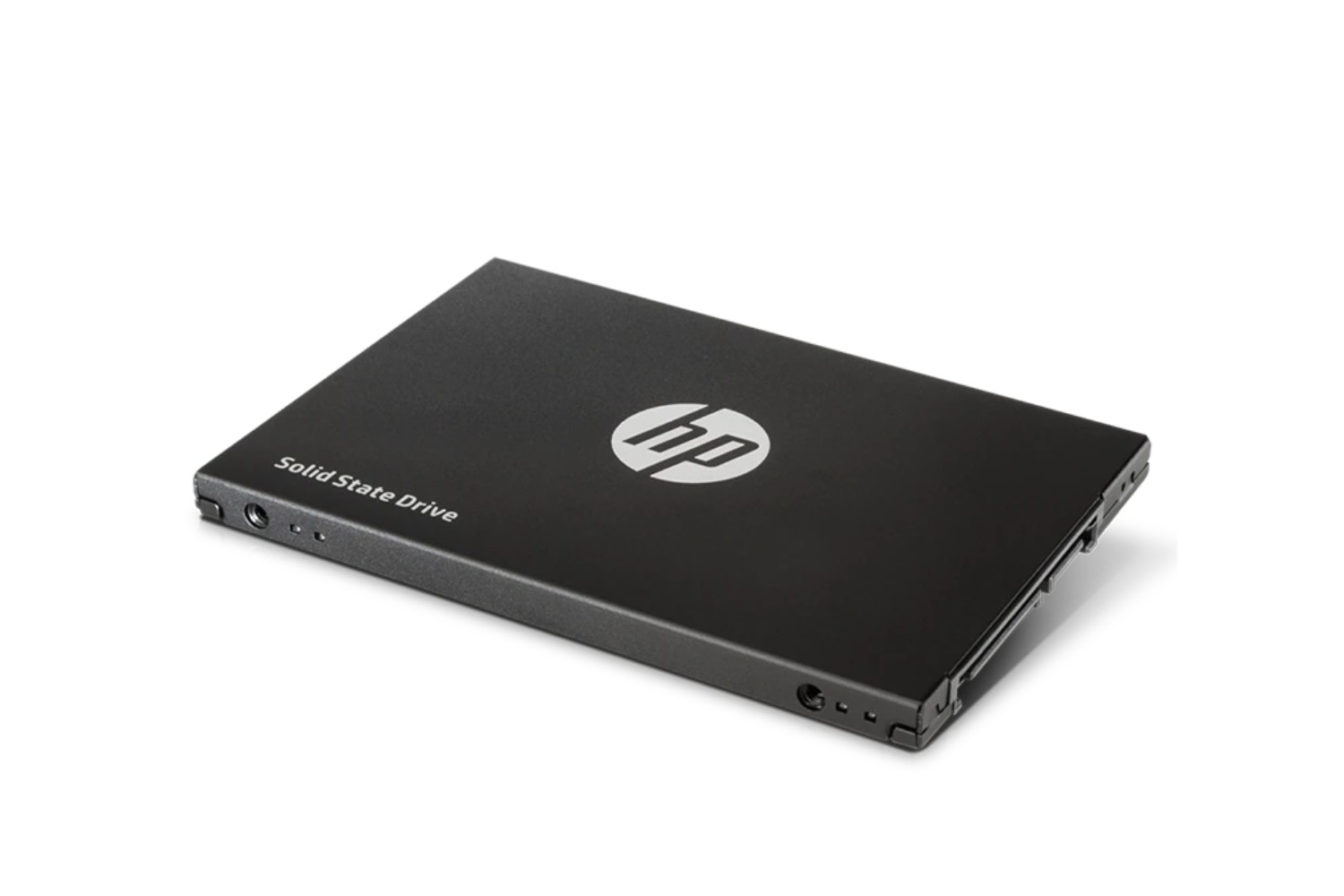Introduction
Upgrading your storage solution is an essential step in optimizing your Windows 10 experience. While traditional hard disk drives (HDDs) have long been the standard, solid-state drives (SSDs) have revolutionized the way we store and access data. With their lightning-fast speeds and improved reliability, SSDs offer a significant performance boost for running operating systems like Windows 10.
In this article, we will explore the considerations and benefits of choosing the right SSD size for Windows 10. We will delve into the differences between HDDs and SSDs, analyze how much storage Windows 10 requires, and discuss the factors to consider when selecting the size of an SSD for your system.
Whether you are building a new system or upgrading your existing one, having adequate storage is crucial for a seamless Windows 10 experience. Let’s dive into the world of SSDs and discover how to choose the perfect size to optimize your Windows 10 performance.
Note: If you are unsure of what SSD size you currently have or need, consult your system specifications or reach out to a technical expert for guidance.
What is an SSD?
A solid-state drive (SSD) is a type of storage device that uses flash memory to store data persistently. Unlike traditional hard disk drives (HDDs), which rely on spinning magnetic disks, an SSD has no moving parts, making it faster, more durable, and less prone to mechanical failure.
SSDs are designed to deliver superior performance, allowing for faster boot times, quicker application launches, and shorter file transfer durations. This is due to their ability to read and write data at incredibly high speeds, thanks to the absence of physical disks and heads.
As SSD technology has advanced, so too have their capacities. SSDs are now available in various sizes, ranging from a few hundred gigabytes (GB) to several terabytes (TB). This allows users to choose the SSD capacity that best suits their storage needs and budget.
Furthermore, SSDs offer other benefits beyond their speed and storage capacity. They generate less heat than HDDs, which contributes to better system cooling and longevity. Additionally, since SSDs have no mechanical parts, they are less susceptible to shock and vibration damage, making them more reliable for portable devices like laptops.
Overall, solid-state drives are a significant upgrade from traditional hard drives. Their speed, reliability, and durability make them an excellent choice for enhancing the overall performance and user experience, especially when it comes to running an operating system like Windows 10.
Difference between HDD and SSD
When it comes to storage devices, the two primary options are hard disk drives (HDDs) and solid-state drives (SSDs). While they both serve the purpose of storing data, there are significant differences between the two in terms of technology, performance, and reliability.
The main distinction between HDDs and SSDs lies in how they store and retrieve data. HDDs use spinning magnetic disks and read/write heads to access information. These mechanical components introduce a delay in data retrieval, resulting in slower performance compared to SSDs. On the other hand, SSDs utilize flash memory, which allows for faster data access with no moving parts involved.
In terms of speed, SSDs are the clear winner. They offer significantly faster data transfer rates, resulting in quicker system boot times, application launches, and file open and save operations. HDDs, on the other hand, have comparatively slower access times due to the mechanical nature of their operations.
Another significant difference between HDDs and SSDs is their durability. Since HDDs rely on spinning disks and moving parts, they are more susceptible to mechanical failure, especially in the case of shocks or drops. SSDs, on the other hand, are more robust as they have no moving components, making them more resistant to physical damage.
Additionally, the durability aspect extends to power consumption as well. SSDs consume less power than HDDs, making them more energy-efficient. This not only helps to extend the battery life of portable devices like laptops but also reduces the overall power consumption of desktop systems.
While SSDs offer numerous advantages over HDDs, there is one area where HDDs still have an edge: cost per gigabyte. HDDs are generally more cost-effective when it comes to larger storage capacities. If you require vast amounts of storage space at a more affordable price, an HDD might be the more suitable option.
However, for those seeking optimal performance and speed, especially for running an operating system like Windows 10, SSDs are the preferred choice. The faster data access, increased reliability, and energy efficiency make SSDs an excellent investment for those looking to maximize their computer’s performance.
How much storage does Windows 10 require?
Before choosing the size of an SSD for Windows 10, it’s essential to understand how much storage space the operating system itself requires. The storage requirements can vary depending on the Windows 10 edition and the additional software and files you plan to install.
As of the latest Windows 10 version, the minimum hardware requirements state that a 64-bit version of Windows 10 requires at least 20 GB of storage space. However, it’s important to note that this minimum requirement is for the operating system alone and doesn’t account for additional software, updates, or personal files.
In reality, the recommended storage requirement for comfortable usage of Windows 10 is higher. Microsoft recommends allocating at least 32 GB of storage space for a 64-bit version of Windows 10. This accounts for the operating system, system files, updates, and some room for essential software and personal files.
However, it’s important to consider that this recommended storage space may not be sufficient in the long run, especially if you plan on installing resource-intensive applications, games, or storing large media files. With the growing size of software and media files, it is wise to allocate more space on your SSD to accommodate your future needs and prevent running out of storage space down the line.
Furthermore, it’s worth mentioning that Windows 10 periodically releases major updates, which can require a significant amount of storage space. These updates often introduce new features and improvements and may require several gigabytes of free space to install properly.
In summary, while the minimum requirement for Windows 10 is 20 GB, it is recommended to allocate at least 32 GB or more of storage space for a smooth Windows 10 experience. Allocating additional space is especially beneficial if you plan to install resource-demanding applications or store large files. By opting for a larger SSD, you can future-proof your system and ensure you have adequate space for any software or file requirements that may arise over time.
Factors to consider when choosing the size of an SSD for Windows 10
When selecting the size of an SSD for Windows 10, it’s important to consider several factors to ensure you have enough storage space both in the present and for future needs. Here are some key factors to keep in mind:
- Operating System Requirements: Take into account the recommended storage requirement for Windows 10, which is at least 32 GB for a 64-bit version. This ensures that you have enough space for the operating system files, updates, and essential software.
- Usage and Software: Consider the type and amount of software you plan to install. If you use resource-intensive software, such as video editing applications or graphic design tools, they typically require a significant amount of storage space. Additionally, if you plan to install a large number of games or store media files, allocate extra space accordingly.
- Future Expansion: Think about your future needs and whether you anticipate requiring additional storage space down the line. It’s advisable to choose an SSD with a higher capacity than your current requirements to allow for future software updates, new applications, or expanded data storage.
- Budget: SSDs with larger capacities tend to be more expensive. Determine your budget and weigh the cost versus the required storage capacity. Consider whether the performance improvements and future-proofing benefits of a larger SSD are worth the added investment.
- Backup and Cloud Storage: If you regularly backup your files or use cloud storage options, you may not need as much local storage on your SSD. Take this into account when deciding on the size of your SSD, knowing that you can offload some files to external storage or cloud platforms to free up space.
- Consider SSD Health: It’s worth mentioning that SSDs tend to perform better and have a longer lifespan when they are not fully filled to capacity. To maintain optimal performance and prolong the life of your SSD, it’s recommended to leave a portion of the drive empty.
By considering these factors, you can make an informed decision when choosing the size of your SSD for Windows 10. It’s crucial to strike a balance between your current needs, future expectations, and your budget to ensure that you have enough storage space while maximizing performance and longevity.
Recommended SSD sizes for Windows 10
When it comes to choosing the right SSD size for Windows 10, there is no one-size-fits-all answer. The recommended SSD size depends on various factors, including your specific needs, budget, and future requirements. However, there are a few general recommendations that can guide you in selecting the appropriate capacity:
- 120GB – 240GB: This range is suitable for individuals who primarily use their computers for web browsing, document editing, and other everyday tasks. It provides enough space for the operating system, essential software, and a modest collection of files and applications.
- 480GB – 1TB: If you frequently install software, work with multimedia files, or engage in light gaming, this range offers sufficient storage capacity. It allows for a broader range of software installations, larger multimedia collections, and more flexibility for future needs.
- 2TB and above: Users who heavily rely on resource-intensive applications, work with extensive multimedia files like high-resolution videos or RAW photos, or have a large collection of games will benefit from an SSD with 2TB or higher capacity. This enables ample storage space for demanding software, games, and multimedia projects.
It’s worth mentioning that as SSD prices continue to decrease and capacities increase, opting for a larger SSD may become a more cost-effective choice over time.
Keep in mind that these recommendations can vary depending on individual requirements and usage patterns. It’s crucial to assess your specific needs and consider factors such as future expansion, budget, and the nature of the software and files you work with. It may be helpful to consult with a technical expert or refer to system requirements of the specific software you intend to use in order to make an informed decision.
Ultimately, choosing the right SSD size is about striking a balance between your current needs and future expectations. By selecting an SSD with adequate storage capacity, you can ensure smooth operation, quick access to files, and ample space for your Windows 10 system to grow and adapt to your evolving needs.
Benefits of having a larger SSD for Windows 10
Opting for a larger SSD size for your Windows 10 system can provide several advantages and benefits that enhance both performance and user experience. Here are some key benefits of having a larger SSD:
- Increased Storage Capacity: The most obvious advantage of a larger SSD is the ability to store more files, applications, and multimedia content. You’ll have ample space for your operating system, software, games, and personal files, reducing the need for constant file management and providing more room for expansion.
- Improved System Performance: An SSD with larger storage capacity typically offers better performance. With more free space, the drive can perform more efficiently and maintain fast read and write speeds. This translates into quicker boot times, faster application launches, and seamless multitasking capabilities.
- Reduced Fragmentation: With a larger SSD, there is more room for data to be distributed across the drive. This reduces the likelihood of file fragmentation, which can occur when the storage space is limited. Minimizing fragmentation improves overall system performance and helps maintain the longevity of the SSD.
- Flexibility for Software Installations: A larger SSD allows you to install a wider range of software without worrying about running out of storage space. This is particularly beneficial for individuals who rely on resource-intensive applications, such as video editing software, graphic design tools, or virtual machines.
- Room for Media Files: If you work with large multimedia files, such as high-resolution videos, RAW photos, or extensive music libraries, a larger SSD ensures you have sufficient space to store and access these files quickly. This is especially important for content creators, photographers, and videographers.
- Future-Proofing: Investing in a larger SSD provides room for future growth and expansion. As software, games, and other applications continue to increase in size, having a larger SSD ensures you’re prepared for future storage needs, reducing the need for frequent upgrades or additional storage solutions.
It’s important to note that while a larger SSD offers these benefits, it’s still essential to manage your storage wisely. Regularly cleaning up unnecessary files, moving larger files to secondary storage, and practicing good file organization can help maintain optimal performance and ensure you make the most of the increased storage capacity provided by a larger SSD.
Overall, choosing a larger SSD for your Windows 10 system provides increased storage capacity, improved performance, and flexibility. It offers a future-proof solution that caters to expanding storage needs, allowing you to enjoy a smooth and efficient computing experience.
How to upgrade your current SSD size for Windows 10
If you find yourself running out of storage space on your current SSD or simply want to upgrade to a larger capacity, there are steps you can take to successfully upgrade your SSD size for Windows 10. Here’s a general guide to help you through the process:
- Backup your data: Before making any changes to your storage configuration, it’s crucial to back up all your important data. This ensures that you have a copy of your files in case anything goes wrong during the upgrade process.
- Choose a new SSD: Select an SSD with the desired capacity that meets your requirements and budget. Consider factors such as performance, brand reputation, and warranty when making your selection.
- Prepare installation media: Create a bootable installation media for Windows 10. This can be done by downloading the Windows 10 ISO file from the official Microsoft website and utilizing Microsoft’s Media Creation Tool or third-party software to create a bootable USB drive.
- Physically replace the SSD: Turn off your computer and disconnect the power source. Locate your current SSD and carefully remove it from its slot. Insert the new SSD in the same slot and secure it properly.
- Install Windows 10: Connect the bootable installation media (USB drive) to your computer. Power on the computer and boot from the installation media by accessing the BIOS/UEFI settings. Follow the on-screen instructions to install Windows 10 on the new SSD.
- Migrate data (optional): If you want to transfer your existing data from the old SSD to the new one, you can use migration software. There are various third-party tools available that can assist in cloning the data from the old SSD to the new one. Ensure you have enough space on the new SSD to accommodate the migrated data.
- Reinstall software and restore data: Once you have successfully installed Windows 10 on the new SSD, reinstall your software applications and restore your personal files from the backup you created earlier.
- Optimize settings and configure: After everything is set up, you may need to configure certain settings and optimize your system for optimal performance. This includes adjusting power settings, updating drivers, and enabling features like TRIM for SSD maintenance.
It’s worth noting that the steps mentioned above are general guidelines, and specific instructions may vary depending on your hardware and software configuration. It’s always recommended to refer to the manufacturer’s instructions and consult documentation or online resources for detailed information on upgrading your specific SSD model for Windows 10.
By following these steps and taking the necessary precautions, you can successfully upgrade your current SSD size for Windows 10, ensuring adequate storage space and improved performance for your system.
Conclusion
Choosing the right SSD size for Windows 10 is a crucial decision that can greatly impact your system’s performance and storage capabilities. By considering factors such as the operating system requirements, your usage patterns, future expansion needs, and your budget, you can make an informed decision on the appropriate SSD size.
While the minimum storage requirement for Windows 10 is 20 GB, it is recommended to allocate at least 32 GB or more for a smoother experience. However, it’s important to consider your specific needs and anticipate future requirements to ensure you have enough storage space for software installations, multimedia files, and any other data you may need.
Opting for a larger SSD size offers several benefits, such as increased storage capacity, improved system performance, flexibility for software installations, and future-proofing your system. However, it’s important to manage your storage wisely and regularly clean up unnecessary files to maintain optimal performance and make the most of the available space.
When upgrading your current SSD size for Windows 10, make sure to back up your data, choose a new SSD with the desired capacity, properly install the new SSD, and reinstall software and restore your data as necessary. Following these steps will ensure a smooth transition and a more spacious and efficient storage solution.
Ultimately, the right SSD size for Windows 10 will depend on your specific needs and requirements. By considering the factors discussed in this article and carefully evaluating your usage patterns and future plans, you can select an SSD that provides adequate storage space, performance, and longevity for your Windows 10 system.

























